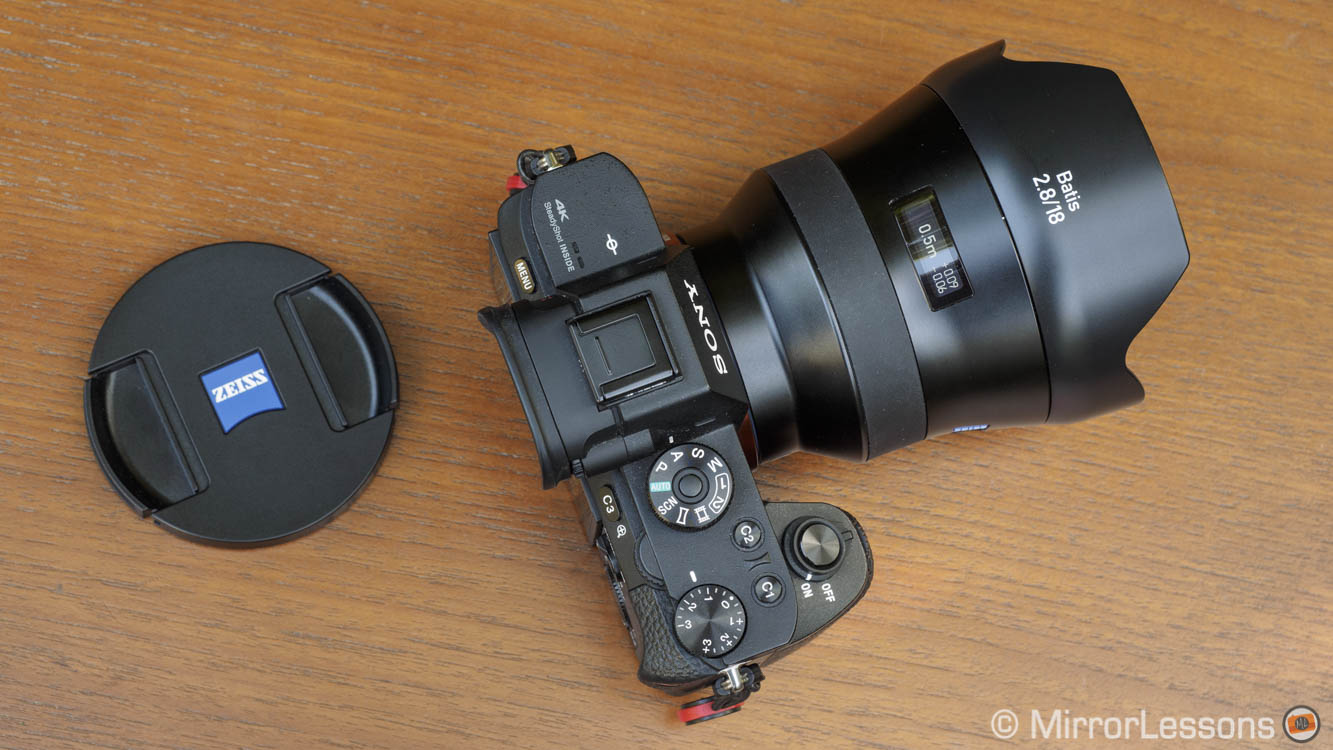When we interviewed product manager Christophe Casenave two years ago, he made it very clear just how important the Sony full-frame mirrorless system was to Zeiss. Today, with no less than 6 lenses designed specifically for the A7 series, we now have a clear picture of the German brand’s commitment, not only to designing lenses in partnership with Sony but also to producing a complete catalogue of its own products.
The 18mm f/2.8 is the third lens in the Batis family which is the autofocus series designed for the FE system. It has a Distagon optical design and is also the most expensive of the three. It is the second widest autofocus prime lens produced for the Sony A7 cameras after the Samyang 14mm.
When I tested the Loxia 21mm (manual focus series), I thought it would be hard to make something better but the 18mm definitely challenges that presumption.
At the risk of becoming repetitive, Zeiss has delivered yet another excellent lens for the system. Astro and architecture photographers especially will love it. Curious? Then keep reading!



Zeiss Batis 2.8/18 main specs
- Mount: E-mount
- Format coverage: 35mm (36×24)
- Focal length: 18mm
- Maximum aperture: 2.8
- Minimum aperture: 22
- Number of aperture blades: 9 circular aperture blades
- Angle of view: 99°
- Closest focusing distance: 25cm
- Lens configuration: 11 elements / 10 groups
- Special elements: 2 Aspherical, 5 special glass, 2 aspherical and special glass elements
- Lens surface coating: Yes (T Coating)
- Maximum image magnification: 0.1x
- Optical Image Stabilizer: None
- Dimensions: ø78 x 95 mm
- Filter diamater: ø77mm
- Weight: 330g
[toc heading_levels=”3″]
Video review
Below you can watch our video review of the Batis 2.8/18.
Design and ease of use
The Batis 18mm is slightly longer than that 25mm that I had the chance to test last year but it doesn’t feel any heavier. At 330g, it is relatively light and doesn’t unbalance a camera like the A7r II.
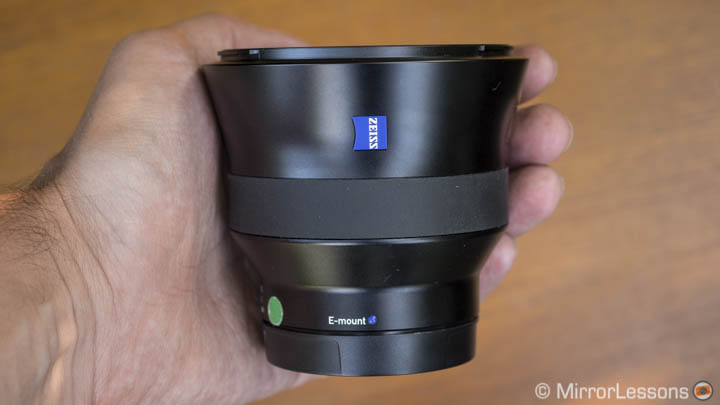
The lens has a metal build and is weather resistant. I used it a couple of times in light rain and there was nothing to worry about. It comes with a plastic hood.
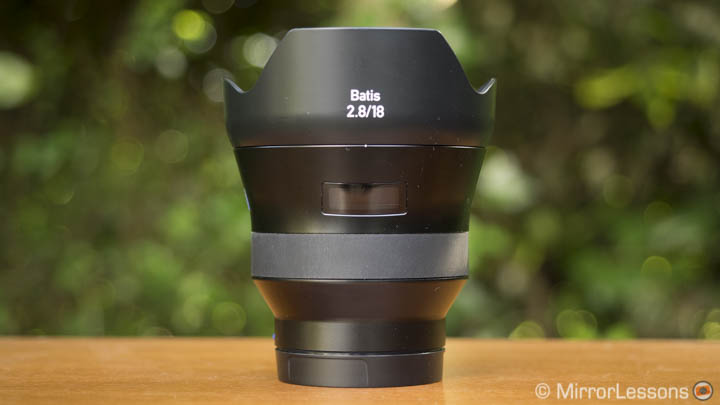
Like the other two Batis lenses (25mm and 85mm), the 18mm f/2.8 has an OLED screen on the barrel. It automatically activates when you power on the camera. It shows the focus distance and depth of field scale, acting as a digital version of the classic distance scale you will find on many manual focus lenses (including the Loxias).
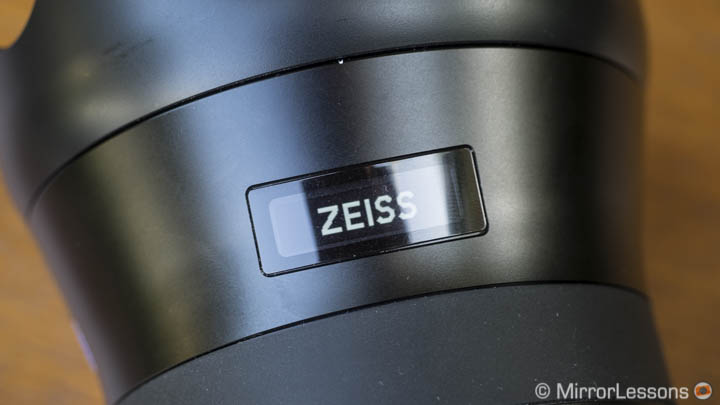
You can also change a few settings on the OLED screen:
- if you turn the focus ring to reach the shortest focus distance, an arrow on the left will appear indicating you’ve reached the minimum distance. If you keep turning the focus ring 360°, you can switch from meters to feet.
- in the opposite direction and starting from the infinity point (an arrow will display on the right), keep turning the ring for another 360° and you can choose to activate or deactivate the OLED screen when you are in autofocus or manual focus mode.
In daylight, the OLED screen can be hard to read at times depending on how the light reflects off the screen.
[twentytwenty]
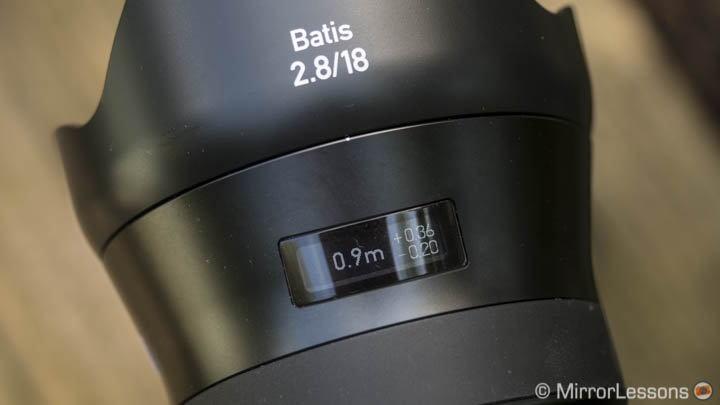
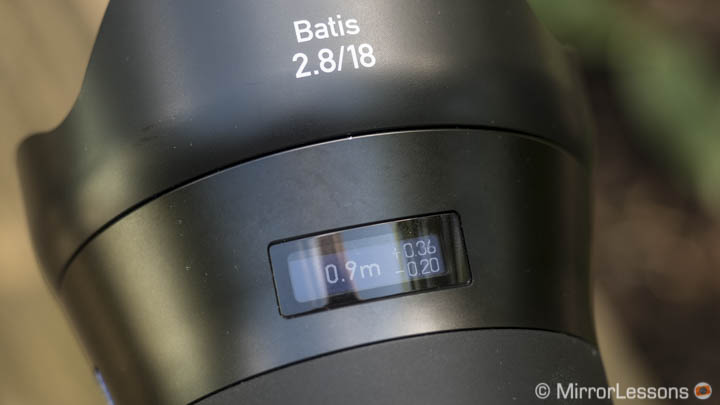
[/twentytwenty]
Like the Batis 25mm, I find it more useful in low-light situations. However I do have a complaint: the screen doesn’t show a precise focus distance past 5m. Instead it only displays < 5m.
Unfortunately for astro-photography the OLED screen is not really helpful.
When I set the focus point the first time, I have to make sure that the stars are tack sharp, so I use focus magnification on the camera’s LCD. The rear monitor of the A7r II also indicates a precise focus distance when I turn the focus ring. When my focus point is set, I can read the exact distance (in that case 23m).
However because the OLED screen on the lens won’t show me the same information (only < 5m), I can’t use it as a reference to double check my focus distance or to re-adjust my focus point between one shot and another if in the meantime I’ve moved the ring while changing positions or compositions. I wish the OLED screen could show the same distance that the camera displays on the LCD screen: it would give it a purpose and create a better user experience.
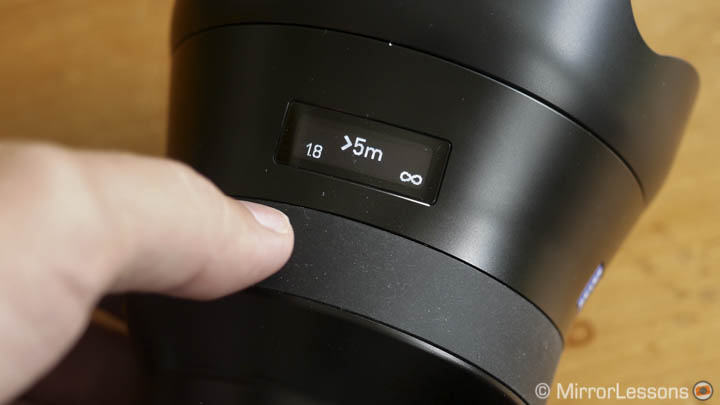
The focus ring is a “fly-by-wire” type and is covered with rubber like all the recent Zeiss lenses (Loxia excluded). The manual focus experience is okay but will require you to turn the ring a lot if you need to switch between opposing focus distances. I admit that after testing the Sony G master lenses, I now have a very strong reference when it comes to “fly-by-wire” focus rings. The one on the Batis is good but not the best.
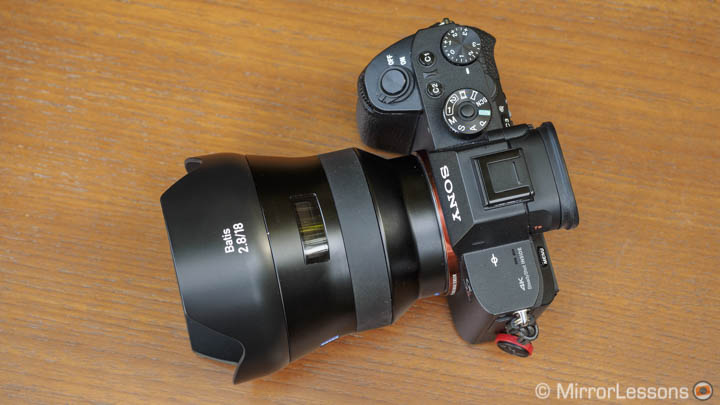
There is nothing to declare concerning the autofocus: it is fast and reliable when used on the A7r II in both single and continuous mode. The performance is slightly slower for video but still more than decent.
The 18mm lacks optical stabilisation. With the A7r mark II that has in-body 5-axis stabilisation, I managed to take a sharp shot down to 1/2s. However to increase your keeper rate, I advise you to stay above 1/5s. With non-stabilised A7 cameras, I would’t go under 1/30s.

As a final note, the lens can take 77mm circular filters which excludes the Lee Seven5 series unfortunately (you will need the 100mm series).
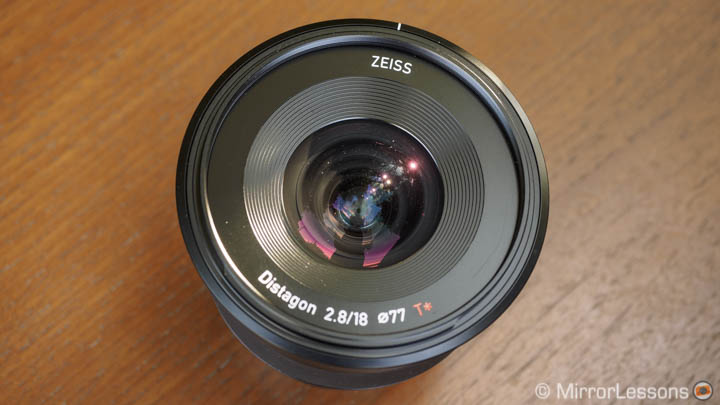
Optical quality
The optical quality of this lens is really excellent. It is the main reason you might want to consider it for your A7 camera and it doesn’t disappoint in any way.
First let’s talk about sharpness: it performs well at f/2.8 already not only at the centre but also at the corners. Peak performance is found at f/4 and it remains excellent up to f/11. As expected some diffraction kicks in at f/16 but only becomes annoying at f/22.

Click on the image to open the full res sequence at all apertures


During my week of testing the weather wasn’t very good, so I only managed to test the lens at night just once. The great performance at f/2.8 is confirmed when shooting stars in the dark night sky. Comatic and chromatic aberration is very well contained and I haven’t come across any invasive comet-like shapes. Astigmatism is very low as well.
So astrophotographers, you will be pleased to know that this lens suits the genre very well. Actually, it might be the best native FE lens you can find right now for this specific task.

Click on the image to open the full res version

The Batis 18mm can focus as close as 25cm in manual focus mode (30cm with autofocus). Getting an attractive shallow depth of field is not easy because of the short focal length. Most of the time you can end up with a busy background which makes the whole image look a little too confusing. The bokeh itself is not bad. It has rounded specular highlights (with onion rings however). At times with the right background and the right light, you can get a decent “creamy” rendering – nothing that blows your mind but the results can be decent. That said, the number of times you’ll take an image like this can be easily counted on one hand.


Vignetting is non-issue with the RAW files once you apply the lens profile in Lightroom or a similar software. As for the OOC JPG, the camera is less precise and some vignetting remains at f/2.8 especially.
[twentytwenty]


[/twentytwenty]
My conclusion is a little different concerning barrel distortion: you get equal results with the in-camera JPG and the RAW file (with the lens profile applied once again). Overall distortion is well contained on this lens and the difference between the native rendering and the corrected version is not huge.
[twentytwenty]


[/twentytwenty]
I find the performance of this lens really excellent for architecture, both indoor and out.
Perspective distortion, which is normal for a wide angle lens, is well-controlled and the lens gives you a very natural and balanced result.






Flare resistance is excellent in most situations. In strong and direct sunlight however, you can encounter some small ghost flares.




Finally, at f/2.8 and f/4 you can come across some light purple fringing especially in the extreme corners. At the centre you will only see some in heavy backlit situations but both cases can be corrected easily in post. In all other situations, CA isn’t an issue.

Conclusion
This wide angle lens can proudly stand beside the Loxia 21mm and the Batis 25mm. For specific assignments like astro-photography or architecture it is actually the most appropriate choice because of the wider field of view and great optical performance. Sharpness at f/2.8 is already excellent, flare resistance is good, coma is very low and distortion is well-contained.

The only criticism I have is related to the ease of use. The lens is weather sealed, light and solid: that’s great. The focus ring is okay considering that it is an electronic type. However the OLED screen lacks some precision where you need it the most (astro-photography) so you have to rely on the distance scale the camera provides on its LCD/EVF. So the advantage of having such a screen on the lens barrel disappears.
If I want to nitpick, I can also add that I would love to see an aperture ring and an AF/MF switch like some Sony lenses. I understand that Zeiss wants to stay faithful to the design they’ve created for the Batis series but these additions simply make a lens easier and more pleasurable to use. And that is what I expect from a Zeiss lens: not just optical quality but a great user experience.

Finally, we have the price. The lens is not cheap and costs around $1500. In my opinion it is worth the investment because of its optical quality if you know exactly what you intend to use it for.
 What I like about the Zeiss Batis 18mm f/2.8:
What I like about the Zeiss Batis 18mm f/2.8:
- It’s Zeiss optical quality at its best: excellent sharpness at all apertures, little distortion, low coma, flare and CA
- Good bokeh at f/2.8 when you focus at the shortest distance
- Weather sealing and light construction
- Good autofocus performance
 What I don’t like about the Zeiss Batis 18mm f/2.8:
What I don’t like about the Zeiss Batis 18mm f/2.8:
- I wish the OLED screen would show a more precise focus distance past 5m when manual focusing for astro work
- An aperture ring and AF/MF switch would improve the user experience
Additional read:
If you are wondering which is better between the 18mm and the Loxia 21mm, make sure to keep following us. A comparison is coming soon!
